L5: Opaque eye pt 1
1/44
There's no tags or description
Looks like no tags are added yet.
Name | Mastery | Learn | Test | Matching | Spaced |
|---|
No study sessions yet.
45 Terms
what are some causes of red/pink neovascularisation of the cornea
Mechanical irritation
Chronic disease
Corneal ulceration (ulcerative keratitis)
Scleritis/episcleritis
Granulation tissue
Neoplasia
what are some mechanical irritation methods that cause neovascularisation
Eyelid abnormalities
Entropion, ectropion
Trichiasis
Districhiasis
Ectopic cilia
Chemical burn
What are some chronic diseases that cause neovascularisation
Chronic superficial keratitis “pannus”
Eosinophilic keratitis
Keratoconjunctivitis sicca (dry eye)
Immune mediated keratitis
What are some causes of white/yellow (deposit/infiltrate) corneas
Lipids
calcium
Abscess/infiltrate
scar/fibrosis
fluorescein
What are some causes of blue (oedema) corneas
Corneal ulcer
vascularisation (leaky vessels)
Intraocular disease
Uveitis
Glaucoma
Lens luxation
What are some causes brown/black (pigment) corneas
Mechanical irritation
sequestrum (bottom left)
Pigmentary keratitis
Melanoma
Foreign body
Corneal perforation with entrapped iris (bottom right)
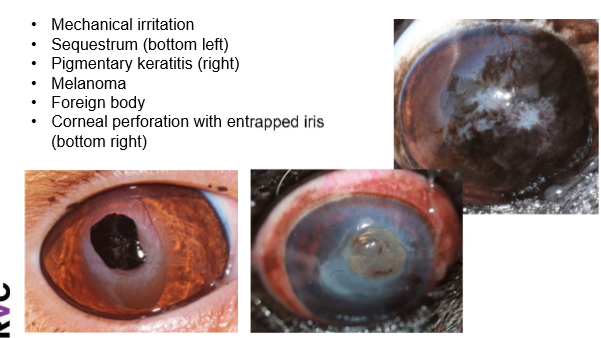
What is the anatomy/physiology of the cornea
Epithelium
stroma
Descements membrane
Endothelium
why is the healthy cornea transparent
No blood vessels
No myelinated nerves
No pigment
Relatively dehydrated
What are some clinical signs of corneal disease
Loss of transparency
Red/pink
White/yellow
Blue
Brown/black
Other
Epiphora/discharge
Blepharospasm
Photophobia
Self trauma/rubbing
What are some diagnostic tests to determine the health/opacity of the cornea
Schirmer tear test 1 (STT-1)
Fluorescein
Seidel
Cytology. culture and sensitivity
What areas of the cornea can heal (and in what order?)
Epithelium
Stromal
Endothelium
Vascularisation
How does the corneal epithelium heal
Enlargement and sliding of epithelial cells together (1-2 hours)
Mitosis of epithelial cells
Completely healed in 1-2 weeks
How does the stroma heal
New collagen fibres and lamellae
weeks to months
Describe endothelium healing in the cornea
Limited capacity for mitosis
Endothelial cells enlarge in size, reduce in number and lose their hexagonal appearance
How fast/ vascularisation of cornea healing occur
0.5 mm per day
What are some ulcerative diseases that cause corneal opacity
KCS
SCCED
Superficial ulcer
Deep ulcer
Descemetocoele
corneal perforation
Melting (malacic) ulcer
foreign body
immune mediated superficial punctate keratitis
FHV-1
Which is the only corneal ulcerative disease that can be debrided
Spontaneous chronic corneal epithelial defect (SCCED)
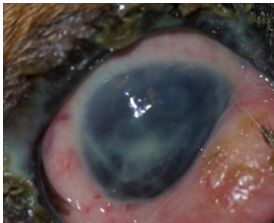
What does this show
KCS
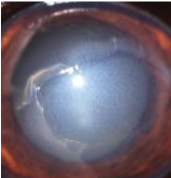
What does this show
Spontaneous chronic corneal epithelial defect
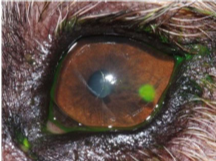
What does this show
Superficial ulcer
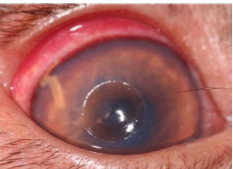
What does this show
Deep ulcer

What does this show
Descemetocoele
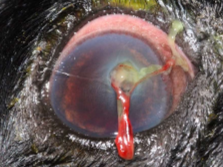
What does this show
corneal perforation
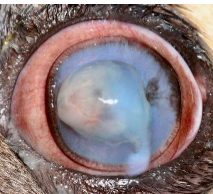
what does this show
Melting (malacic) ulcer
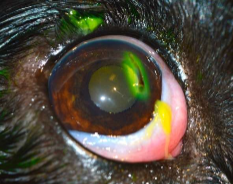
What does this show
Foreign body
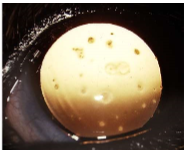
What does this show
immune mediated superficial punctate keratitis
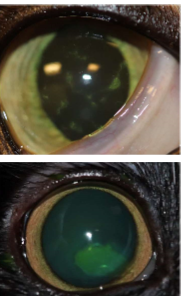
what does this show
Feline herpesvirus
Dendritic-top
Geographic- bottom
What topicals can you apply to manage ulcerative keratitis
Topical antibiotic, antiviral, antifungal
chloramphenicol, ofloxacin
Topical mydriatic/cycloplegic
atropine
Topical anti-collagenase
Serum, EDTA
Systemic analgesic
Oral, NSAID
± topical immunomodulator
Cyclosporine ointment
± topical anti-inflammatory
Risk of delayed corneal healing
What are the ways of managing ulcerative keratitis
Medical
Corneal collagen cross linking
Surgical grafting
Tarsorrhaphy vs 3rd eyelid flap vs contact lens
When does ulcerative disease become non-healing
Longer than 2 weeks on appropriate treatment
What are some causes of non healing ulcerative disease
mechanical irritation
Infection
Malacia
SCCED
neoplasia (rare)
What are some non ulcerative diseases
Eosinophilic keratitis
Chronic superficial keratitis (pannus)
Corneal sequestrum
Acute bullous keratopathy
Pigmentary keratitis
Mineral deposition
Scar/fibrosis
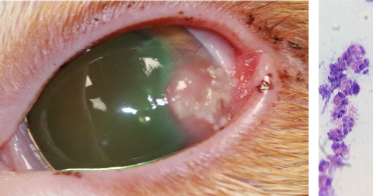
What does this show
Eosinophilic keratitis
ulcerative in up to 25% of cases
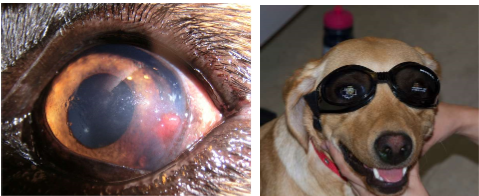
What does this show
Chronic superficial keratitis (pannus)
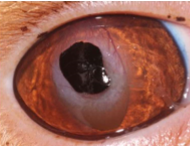
What does this show
Corneal sequestrum
May be ulcerative around the edge or have started as an ulcer
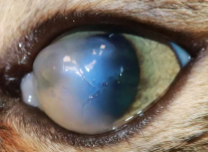
What does this show
Acute bullous keratopathy
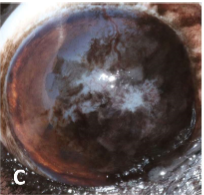
what does this show
pigmentary keratitis
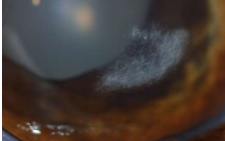
What does this show
mineral deposition
Calcium/lipid
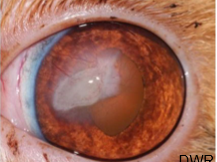
What does this show
Scar/fibrosis
What are some causes of corneal oedema
Endothelial degeneration
Uveitis
Lens luxation
Glaucoma
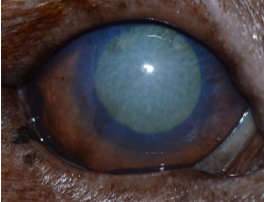
What does this show
Endothelial degeneration
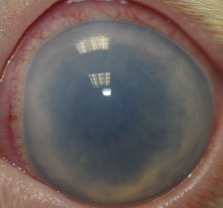
What does this show
Uveitis
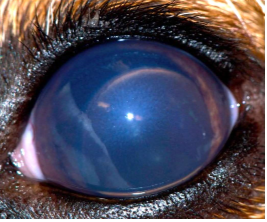
What does this show
Lens luxation
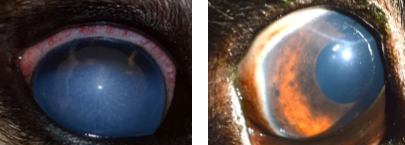
What does this show
Glaucoma
What cases should third eyelid flaps be reserved for
Globe proptosis
Bullous keratopathy